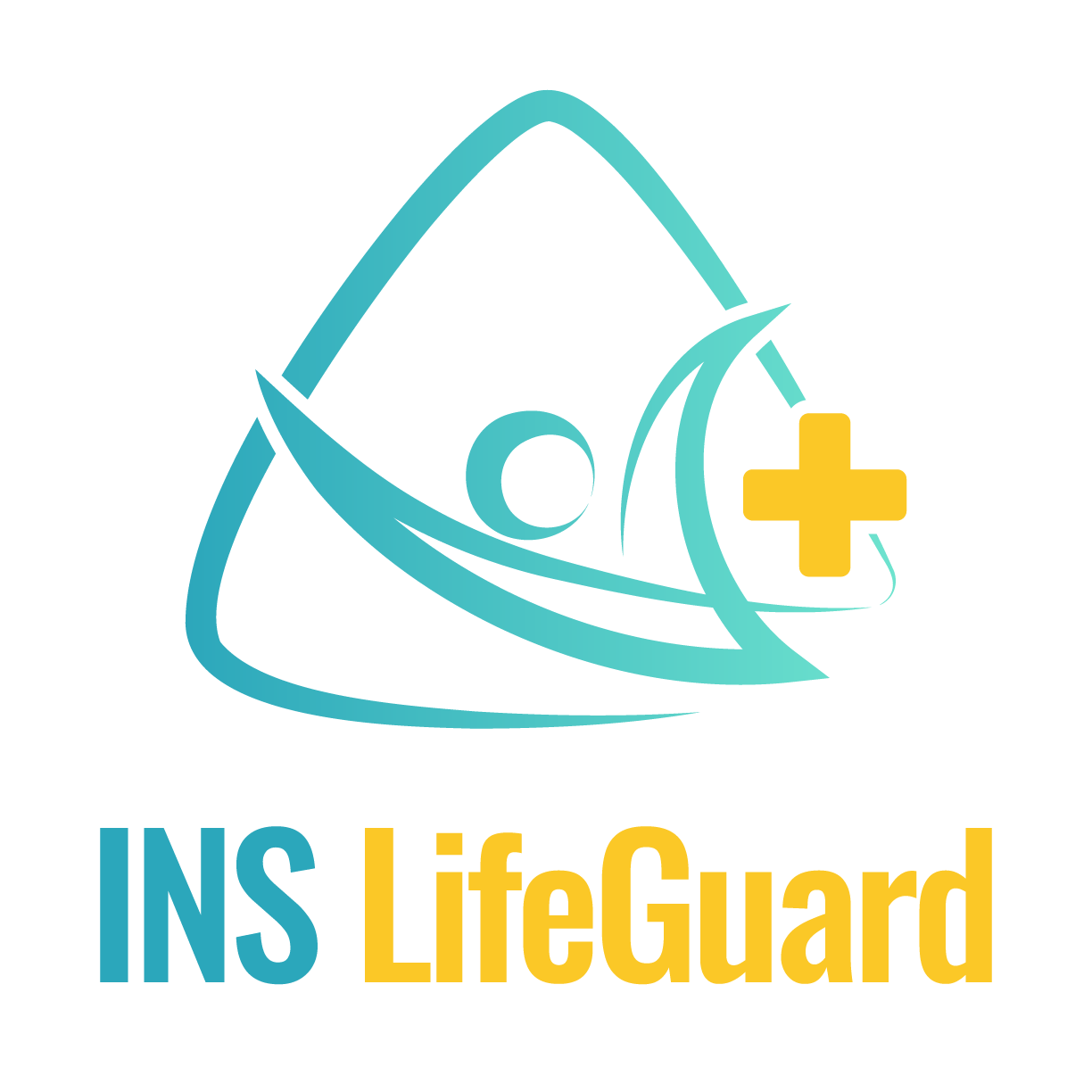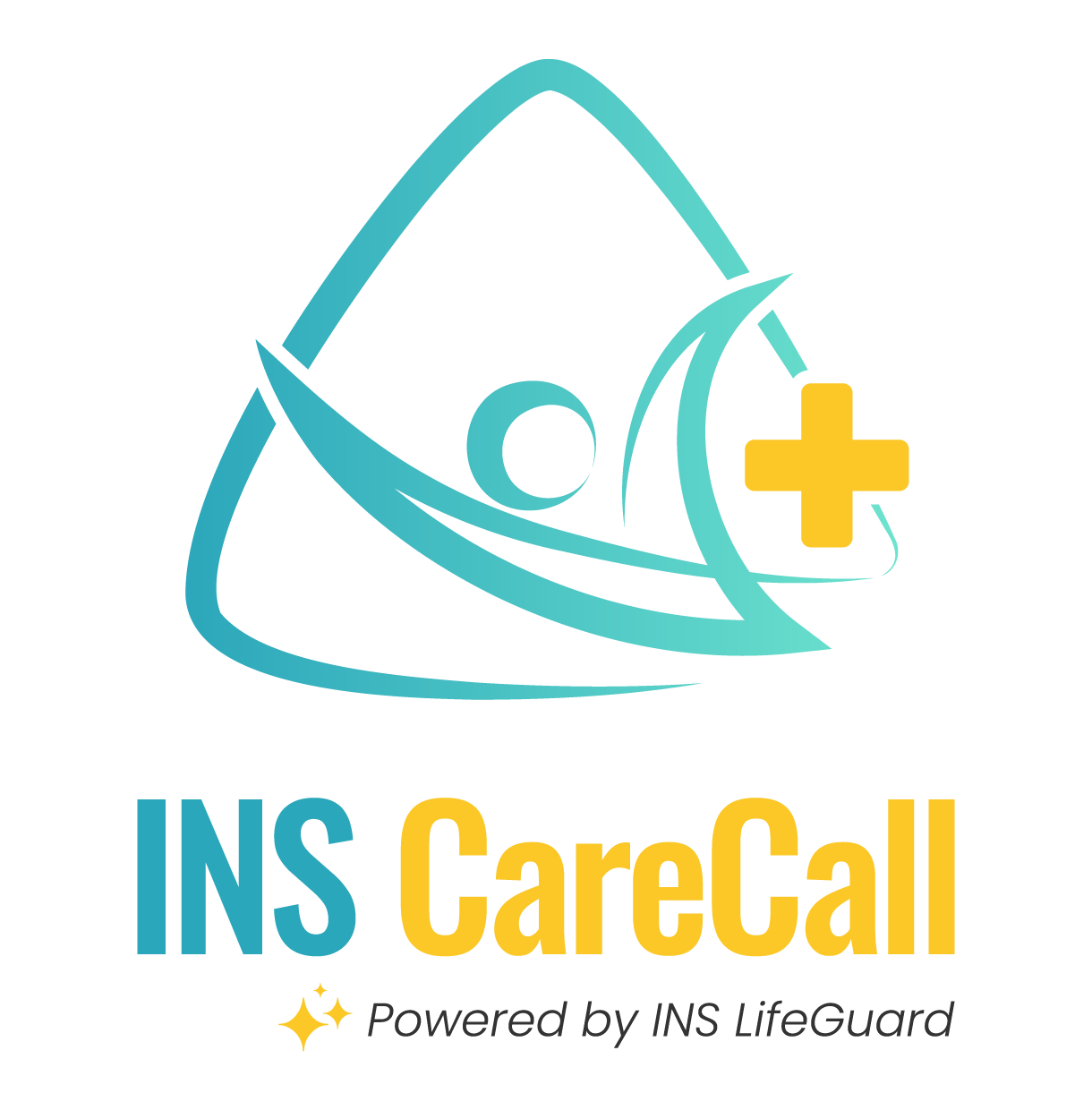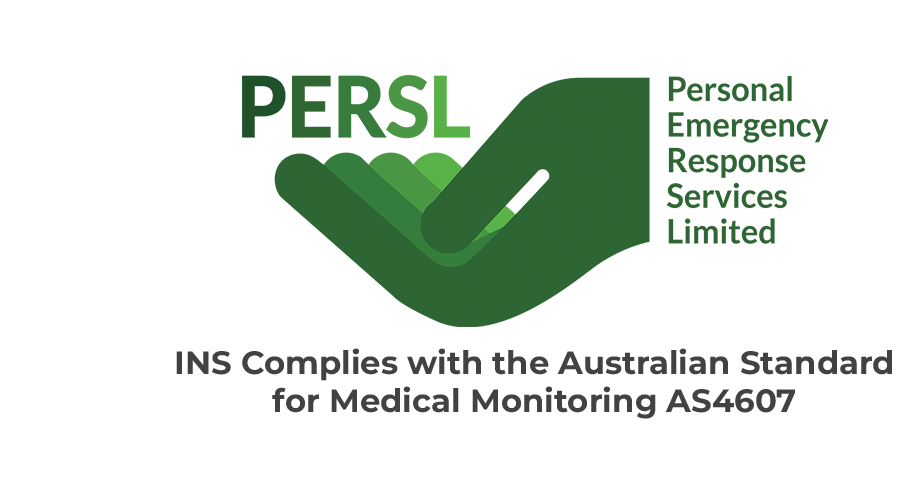INS LifeGuard
Enhancing Senior Safety: Using Personal Alarms for Atonic Seizures in Epilepsy

Do you have a senior family member suffering from atonic seizures due to epilepsy? While atonic seizures themselves are not typically considered fatal, the potential for injury during a seizure, such as head trauma from falling, could pose serious health risks. Thus, it's crucial for individuals experiencing atonic seizures to develop appropriate management strategies to minimise any associated dangers.
In this blog, we'll discuss how people suffering from atonic seizures due to epilepsy can use personal alarms to enhance safety in their daily lives. By exploring how these devices work, you can mitigate the risk of injury while being able to perform your daily routines with increased confidence. Read this blog to learn more.
What is an atonic seizure?
An atonic seizure, also known as a drop attack, is one of the many types of seizure that can occur as part of specific epilepsy syndromes or generalised epilepsy conditions. It often involves a sudden loss of muscle tone and muscle strength where one part of the brain experiences a sudden and brief disruption in its electrical activity.
While atonic seizures can occur in seniors due to underlying conditions, it's important to understand that individuals of all ages might also experience them due to other types of seizures, like tonic or myoclonic atonic seizures.
During an atonic seizure, the affected individual may experience muscle contractions or spasms, causing them to collapse or fall without any warning. Thus, treating atonic seizures may involve changing one's lifestyle, taking antiepileptic medications, and, in some cases, undergoing therapeutic interventions.
What are the types of Atonic Seizures?
Atonic seizures can be categorised as focal motor atonic seizure or generalized onset atonic seizure. When the atonic seizure occurs throughout the entire brain, it is identified as a generalized atonic seizure. Hence, in most cases, atonic seizures are primarily classified as generalized seizures.
There are six types of generalized seizures:
- Absence seizures (petit mal)
- Atypical absence seizures
- Atonic seizures
- Tonic-clonic seizures (grand mal)
- Clonic seizures
- Tonic seizures
- Myoclonic seizures

What causes atonic seizures?
Atonic seizures are often caused by epilepsy, a complex neurological disorder characterised by abnormal electrical activity in the brain. However, based on certain findings, other potential triggers or causes of drop seizures may include the following:
- genetics
- sleep deprivation
- stress and anxiety
- head injuries
- infections
- certain neurological conditions
- hormonal changes
- physical exhaustion
How is atonic seizure diagnosed?
Diagnosing atonic seizures is important to understand clearly the specific type of seizure and be able to develop an effective treatment plan.
Medical professionals typically use EEG recordings to further diagnose atonic seizures and determine the most appropriate course of treatment. However, if the doctor cannot successfully diagnose atonic seizures from the EEG results, they may need to use a combination of clinical evaluations, and other diagnostic tests to check for changes in blood pressure or heart rhythm.
Common diagnostic tests include:
- Clinical history
- Physical examination
- Electroencephalogram (EEG)
- Video EEG monitoring
- Magnetic resonance imaging (MRI)
- Blood tests
- Neuropsychological testing
If the atonic seizure occurred due to epilepsy, the neurologist may tailor the treatment approach based on the identified epilepsy syndrome or specific characteristics of the seizures. This could involve the prescription of antiepileptic medications, lifestyle adjustments, and ongoing monitoring to manage and reduce the frequency of seizures.
However, if traditional anti-epileptic medications do not respond well to the individual, Vagus nerve stimulation (VNS) may offer an alternative approach to managing epilepsy. The implantation of the vagus nerve stimulator allows for ongoing, controlled electrical stimulation of the vagus nerve, potentially providing additional seizure control.
How often do atonic seizures occur?
Atonic seizures can occur sporadically or in clusters. While some individuals may have them daily, others may experience them once a month, or more frequently. It's important to note that not all individuals who have epilepsy will necessarily experience atonic seizures. However, their occurrence may be influenced by the following factors:
- lifestyle factors
- stress levels
- overall health
- effectiveness of the prescribed treatment
Atonic seizures are highly individualised, and their frequency may change over time. That's why regular follow-up with healthcare professionals is essential to assess factors that trigger seizures and to determine if the current treatment plan is effective in order to make adjustments as needed.
What is the best way to help people with atonic seizures?
Supporting individuals who experience atonic seizures due to epilepsy involves a multifaceted approach to enhance their safety, well-being, and overall quality of life. Here are key strategies to provide assistance:
Medication
Depending on the individual's condition, it is best to consult with a neurologist or medical professional first before taking any anti-epileptic or anti-seizure medication such as:
- valproic acid
- topiramate
- zonisamide
- levetiracetam
- lamotrigine
- clonazepam
- chlorazepate
- lorazepam
- clobazam
- rufinamide
- felbamate
Dietary Therapies
If medications prove ineffective, alternative dietary therapies such as ketogenic, low glycemic, modified Atkins diet, vagus nerve stimulation, or the split-brain operation (callosotomy) might be considered as potential options. The type of therapy to try depends on whether the seizure occurred in one part or both sides.
Psychosocial Support
Offer emotional support and create an understanding and supportive environment. You can join support groups or connect with organisations that are focused on epilepsy to share experiences and receive guidance from others facing similar challenges. This way, you can exchange coping strategies, learn about new developments in seizure management, and navigate the emotional aspects of living with atonic seizures.
Lifestyle Modifications
Having a healthy lifestyle can significantly contribute to seizure control. This involves prioritising regular sleep patterns, effectively managing stress levels through relaxation techniques, and maintaining a balanced and nutritious diet. By consistently adhering to these lifestyle factors, individuals who experience atonic seizures can minimise their triggers and optimise their overall well-being.
Create a Safe Environment
Atonic seizures are dangerous, especially because they often occur without warning. That's why creating a safe environment is crucial to mitigate the risks of serious injury. Removing sharp objects, using safety padding, and securing furniture can help prevent accidents during drop attacks. By adapting safety measures based on the individual's seizure patterns, you can further protect them and reduce the potential dangers associated with atonic seizures.
Use of Personal Alarms
Personal alarms are designed to provide immediate assistance to individuals who are in an emergency or those who experience atonic seizures as a result of epilepsy. These devices often come equipped with one-touch emergency buttons and fall detection features that are particularly valuable in situations where the person may be alone.

How do personal alarms enhance safety for those with epilepsy-related atonic seizures?
Personal alarms significantly enhance safety for individuals experiencing atonic seizures. Among these, INS LifeGuard's personal alarms stand out as particularly beneficial due to their comprehensive features. Here are some of the ways that personal alarms make people safer during drop seizures:
Immediate Assistance
Since drop attacks can occur at any time, having a personal alarm ensures that help is accessible whenever needed. INS LifeGuard's personal alarms include a 24/7 personal emergency button that enables immediate contact with a highly qualified and experienced nurse in the Emergency Response Centre. Not to mention, it also has GPS location tracking that allows responders to find the user's location accurately.
Real-time Communication
INS LifeGuard's personal alarms have a two-way communication feature that enables individuals with atonic seizures to interact directly with their caregivers or emergency responders. This real-time communication not only allows for the immediate exchange of information about the individual's condition but also provides them with comforting reassurance during a distressing situation.
Promotes Independence
Knowing that they have a personal alarm allows individuals with atonic seizures to be more independent. This can boost their confidence and encourage them to engage in daily activities without constant concern about the potential consequences of an atonic seizure. Whether at home, outdoors, or in public spaces, personal alarms are readily available to signal for help.
Portable and Easy to Use
INS LifeGuard's personal alarms are compact and portable, allowing individuals with atonic seizures and epilepsy to carry them wherever they go. They also come with a one-touch emergency button which is easy to use, so they can activate it quickly during or after a seizure. Not to mention, it also has an automatic fall detection feature to automatically trigger an alert in the event of a fall, even if the individual is unable to activate the emergency button.
Offers Peace of Mind
Personal alarms not only bring security to those who experience drop attacks but they also offer peace of mind to caregivers and family members. Knowing that immediate assistance is just a button press away, carers can have greater confidence that their loved ones can receive help quickly even if they are not immediately present.
Takeaway
Treating atonic seizures and addressing epilepsy symptoms are essential for improving overall quality of life. Beyond medication and lifestyle changes, individuals can take other practical steps to enhance their safety and well-being. The use of personal alarms provides an added layer of safety by assisting individuals in promptly alerting emergency responders during atonic seizures. This not only minimises risks during drop attacks but also gives them more confidence and freedom to move around in different places.
If you or your elderly loved one is suffering from atonic seizures due to epilepsy, INS LifeGuard offers wearable personal alarm devices that individuals with atonic seizures can use while going about their daily activities. These personal alarms are designed to provide continuous protection in your everyday life. For more information regarding our products, call 1800 636 040 or explore our website.

About
INS LifeGuard is the only 24/7 nurse on-call personal and medical monitoring in Australia. We provide monitoring technology for both in the home and on the go and can also monitor other provider's equipment. Our services are suitable for anyone wanting support to stay independent such as the elderly, those with medical conditions and disabilities plus enhancing safety and security for lone workers.













